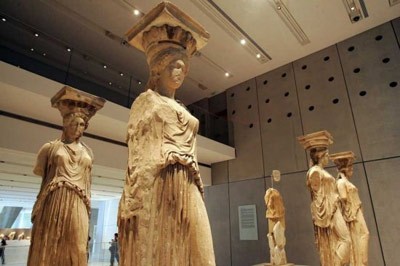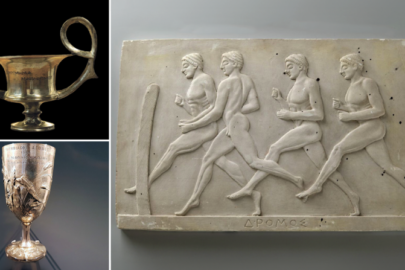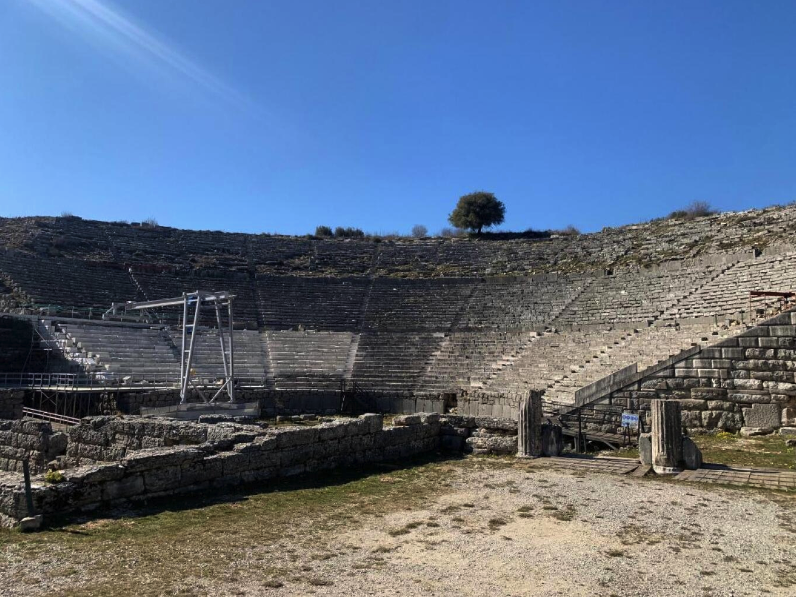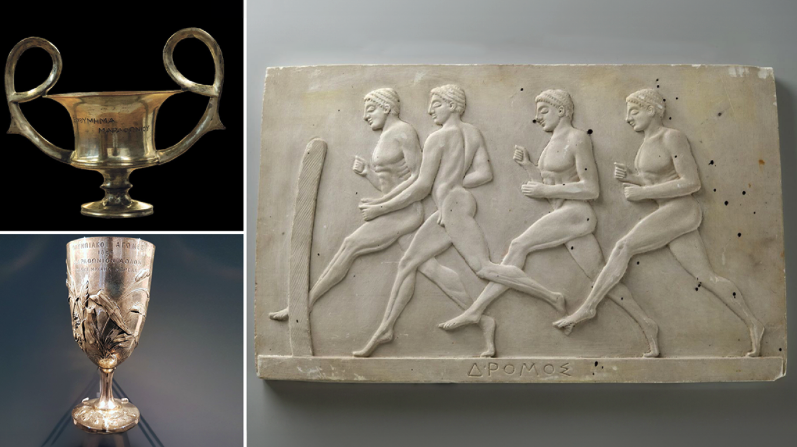50 national and private museums are scattered throughout Athens, featuring from Neolithic settlement finds to examples of modern art. The archaeological museums of Athens offer a journey into antiquity going back to the birth of ancient Greek art. Nevertheless, hidden treasures housed in smaller museums present great interest also. The Byzantine Museum houses splendid icons collections, marble sections of early Christian churches, fine samples of sacerdotal vestments, silver and gold church vessels, as well as a wealth of mosaics and manuscripts. The Monastery of St. Loukas near Delphi is well worth a visit.
The Folk Art Museums offer hospitality to creations of popular culture crafted by simple folk since the 18th century. Artworks of jewelry, wood-carving, needlework and weaving are often exhibited along with traditional costumes, wooden farming tools, folk art paintings and items of daily use.
A fine example is the Benaki Museum in Athens housing a significant collection of folk art. The relics of modern Greek history are exhibited in a multitude of small or large History Museums exhibiting substantial collections of arms used during the Independence War against the Turks, accessories of the uniforms worn by the Freedom Fighters, banners, flags and paintings inspired by that struggle The long affair of the Greeks with the sea, dating back to the arrival of the first Greek tribes in the region, is better understood through the exhibits at the Maritime Museums. Other museum categories operating in Athens include the Natural History Museums, Science and Technology Museums, Art Workshops and Cultural Centres.
The city’s major ancient sites are linked in a vast pedestrian network, a modern Panathenaic Way closed to all vehicles but public transport, starting at the site of the new Acropolis Museum and eventually reaching the ruins of ancient Eleusis 22 kilometres away. A 1.7 kilometre stretch of tarmac from the Roman Arch of Hadrian to the classical Dipylon Gate, paved in Cycladic marble and stone, is the walkway in the heart of a web extending from the site of the first modern Olympics to the overgrown foundation of Plato’s Academy, four kilometres to the west.
Walkways link the Temple of Olympian Zeus with the Acropolis, the Philopappos Hill, the ancient and Roman Agoras, Hadrian’s Library and Kerameikos cemetery with all six sites spruced up, the ancient structures conserved and restored to a degree. No trip to Athens would be complete without a visit to the sacred rock of the Acropolis, an obvious choice for a fortress and sanctuary in ancient times.
Recently undergone extensive restoration, the new Acropolis Museum hopes eventually to display the collection of the 5th century BC Parthenon Marbles currently housed in London’s British Museum after they were removed from the Acropolis by Lord Elgin in early 19th century.





































